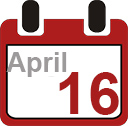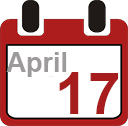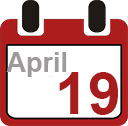ConVEx Baltimore Presentations
The ConVEx Baltimore program offers career-empowering knowledge, practical solutions, best practices, and the best networking in the industry.
IMPORTANT PROGRAMMING NOTE
The lineup and schedule posted here are based on current commitments from presenters and are subject to change.
Monday ~ April 17, 2023
Ontologies, Taxonomies and Terminology
The question arises how this amount of information can be classified to make it more usable and to find it faster and reliably. What helps to avoid losing the information forever in a black hole? How can information be classified so that it becomes findable and usable for both creators and users? How can ontologies, taxonomies and terminology help.
Torsten Machert, Congree Language Technologies

Torsten Machert studied Russian and Spanish at Humboldt University, Berlin. He spent 20+ years in leading positions in the CMS industry. At Congree Torsten is working as Senior Consultant helping customers to improve their content quality.
Adventures in cCMS Migration
Our journey includes diving into RFPs, trialing cCMS’s, working with experts, talking with users, patience with internal changes, and balancing the workload. What features do we really need? What can we live without? What do we want to avoid? What is the best tool for our team? If you have the same questions, join us for Adventures in cCMS migration.
Sarah Rowe & Bobbi Werner, Baxter

Sarah Rowe has a passion for increasing efficiency with technology. She is a Senior Technical Writer at Baxter. Sarah manages the component content management system (cCMS) for Front Line Care medical device user documentation, coordinates translations, on-boards new users, and supports existing users. Sarah has an MS in Information Technology and is a member of CIDM and STC.

Bobbi Werner is Senior Manager, Technical Communication, at Baxter’s Front Line Care division. She leads a team of technical writers, illustrators, and specialists to create, update, and release user documentation for medical devices. Bobbi is a member of CIDM and STC. She is an STC Fellow and currently serves as Treasurer on the STC Executive Board.
Future of Content: Omnisource, omnichannel, omnipresent
As the demands of modern businesses continue to accelerate and evolve, siloed technical content delivered via single-destination point solutions is no longer a viable model. Instead, customer-facing content must be agile, multichannel and headless. Content strategies need to be built around supporting format diversity; integrating with an endlessly changing toolstack and unifying consistent experiences at every customer channel.
Joe Gelb, Zoomin

Joe Gelb President and Co-Founder Joe Gelb has more than 25 years of experience helping enterprises implement and capitalize on customer-facing technical content. At Zoomin, he and his team has spearheaded the development of advanced technology solutions for digital experience, helping organizations reduce customer effort by providing personalized and consistent product information at the point of need.
How to Boost Discovery Experiences
Ever wondered that the content discovery struggle of users are real in the ever-evolving VUCA world?
In the information-flooded world, users are demanding a super-fast information retrieval mechanism for an enhanced content discovery experience. It’s time to strategize global data-mining approaches for curating content for enhanced personalized content experiences. It’s time to explore semantic metadata and concepts of OWL!
Anu Singh, Fiserv
 Dr Anu Singh is a creative disrupter who believes in the enormity of the human mind, its thoughts, feelings and the social paradigm it creates and coexists in. She can help you connect dots between a great product experience and a self-serving content experience. Anu loves reading about culture, new technologies and stories in the novel or short-story format.
Dr Anu Singh is a creative disrupter who believes in the enormity of the human mind, its thoughts, feelings and the social paradigm it creates and coexists in. She can help you connect dots between a great product experience and a self-serving content experience. Anu loves reading about culture, new technologies and stories in the novel or short-story format.
Establishing a Unified Global Content Strategy
With extensive inventories of products and writers across the globe documenting them, it’s easy for teams to adopt their own separate content strategies from within. This siloed approach can lead to inconsistent, ineffective enablement experiences for users. Explore ways Pega overcame these struggles by establishing and communicating a unified content strategy driven from the outside in, while leveraging DITA, Oxygen Web Author, Continuous Integration and Zoomin to automate delivery of a clean user experience.
Joe Zucker and Brandon Lamontagne, PEGA
 An experienced content platform and tools architect, Joe has been the driver for many XML-based documentation department delivery and process initiatives.
An experienced content platform and tools architect, Joe has been the driver for many XML-based documentation department delivery and process initiatives.
From his work at companies like Pega, ServiceNow and Automation Anywhere, he is a huge advocate for implementing solutions that leverage automation, open-source software, and in-house resources. Joe strives to provide creative answers that support an excellent customer experience.
 My name is Brandon Lamontagne and I’m a Principal Content Strategist at Pegasystems based in Cambridge, MA. My background is in English and writing, content strategy, information architecture, and web publishing. I’ve been lucky enough to do what I love and am passionate about: creating and maintaining great user experiences, for the last ten years.
My name is Brandon Lamontagne and I’m a Principal Content Strategist at Pegasystems based in Cambridge, MA. My background is in English and writing, content strategy, information architecture, and web publishing. I’ve been lucky enough to do what I love and am passionate about: creating and maintaining great user experiences, for the last ten years.
Crawl, Walk, Run, Write (Right)!
Structured writing is a paradigm shift for most technical writers, redefining the processes, tools, and even the ways a writer needs to process information from SMEs. No wonder that most new writers feel overwhelmed, but there are ways to make the transition easier for our authors and users.
Jo Lam, Paligo & Keith Schengili-Roberts, DITAWriter.com
 Jo is a solutions engineer, an information architect, the past president of STC Toronto, and a member of the Semantic Content Graph Guild. She is passionate about empowering fellow professionals while raising the standards for the content industry. She and her partner spend time outdoors, on video games, and with her two cats in Toronto, ON.
Jo is a solutions engineer, an information architect, the past president of STC Toronto, and a member of the Semantic Content Graph Guild. She is passionate about empowering fellow professionals while raising the standards for the content industry. She and her partner spend time outdoors, on video games, and with her two cats in Toronto, ON.
 bio coming soon
bio coming soon
Clarity and Consistency in Content
Information is developed to support your product or service throughout its full lifecycle. Whether it’s technical manuals, online help, social media, legal or marketing, content impacts your business. So clarity and consistency in terminology and (technical) writing brings significant value to your business, including reuse within and across silos, taxonomy and your content strategy. We’ll explain why and how.
Berry Braster, Etteplan

Berry Braster is Technology Director at Etteplan, with over 4000 experts in engineering, IoT, of which 850 are active in technical information solutions. Berry has been active in the technical information field for over 20 years and is a frequent speaker at CIDM events.
Reality Check: Considerations beyond the CCMS
Managing content at a granular level most certainly provides greater consistency and accuracy, reduced costs, and traceability. But the siren song of reuse and cost reductions must be tempered with several hidden considerations not often discussed when licensing CCMS software. This panel discussion dives deep into the reality checks organizations must consider before the CCMS selection process.
Marianne Calilhanna, DCL; Alan Pringle, Scriptorium; Carrie Hane, Sanity; Jonathan Chandler, Intralox

Marianne has been involved with structured content since the days of SGML. She helps people understand the true business value of markup languages (e.g., DITA and other types of XML) in an organization’s content strategy. Marianne is the VP of Marketing at Data Conversion Laboratory, an organization that provides data and content transformation services and solutions

Alan solves content problems. He pinpoints process improvements that boost how your content accomplishes corporate goals, and he calculates your projected return on investment from those enhancements. While collaborating on your strategy for better content operations, Alan evaluates software vendors and tools to recommend best-fit solutions.

Carrie is a creative problem solver who transforms organizations by connecting people, processes, and technology for sustainable outcomes. She is the co-author of Designing Connected Content, a “primer for reckoning with the future of content.” As a principal evangelist for the composable content platform Sanity, she advocates for future-friendly structured content.

Jonathan is a seasoned technical writer, manager, and content strategist with more than 15 years of experience in the industry. With a B.A. and M.A. in English, specializing in technical documentation, Jonathan is well-versed in the art of creating effective and engaging technical content. As the manager of the Technical Publications department at Intralox, the world leader in modular conveyor belts and conveyance technologies, he leads a team of writers and is responsible for driving the strategy to create content at scale. In his free time, he enjoys flamenco dancing, spelunking, and adding fictional hobbies to his bios.
How to Succeed with Digital Transformation
Learn how to supercharge your digital transformation by adopting a structured content approach. We’ll explore how organizations use DITA as a key enabler of their transformations — breaking down silos, delivering new products and realizing efficiencies. You’ll come away with a better understanding of the challenges, how they made it work and what transformation might mean for you.
Maura Moran, Contiem
 Maura is a Senior Content Consultant at Contiem, with a focus on content strategy, transformation, and content management. She has over 25 years’ experience helping organizations drive value through improved content practices, including major clients in pharma, manufacturing and publishing sectors. She balances finding the right technical solution with practical implementation, including a solid approach to change management and governance.
Maura is a Senior Content Consultant at Contiem, with a focus on content strategy, transformation, and content management. She has over 25 years’ experience helping organizations drive value through improved content practices, including major clients in pharma, manufacturing and publishing sectors. She balances finding the right technical solution with practical implementation, including a solid approach to change management and governance.
Inside Out - Taxonomies and Metadata
In this session, would like to share a overview of taxonomy and metadata. Being a content developer or customer advocates, it is vital for us to know why and how it matters to our customers. Creating a right kind of taxonomy and metadata helps in search engine optimization (SEO).
Meenakshi Dwivedi, SAP

An Information architect at SAP with more than 15 years of industry experience in content development, coaching, communication, project planning and management. She has published technical blogs for SAP products. She is part of the SAP brand ambassador program.
Right Sizing your Content: The Goldilocks principle
We’ve all heard the benefits that can be realized by modularizing, decomposing, and otherwise breaking our “documents” into smaller bits so it can be repurposed, reused, recombined, recycled, and delivered in a myriad of forms. But how do you determine the level of granularity that is “just right” for your content and for your organization? Can small be too small?
Mary McRae, Contiem
 Mary McRae first learned about structured markup in 1993 when she implemented her first CCMS for editing, maintaining, and publishing modularized, structured content for Butterworth Legal Publishers. Since then she’s been helping other organizations do the same. She has been actively involved in the standards process since 2000 and currently serves on the JATS and BITS technical committees.
Mary McRae first learned about structured markup in 1993 when she implemented her first CCMS for editing, maintaining, and publishing modularized, structured content for Butterworth Legal Publishers. Since then she’s been helping other organizations do the same. She has been actively involved in the standards process since 2000 and currently serves on the JATS and BITS technical committees.
Taking Stock: Reassessing your DITA platform
Many DITA adopters are thinking about their next move. Should I stick with DITA? Are my current platform, tooling, and information model still working? Should I look for something new or more current? If this sounds like you, it may be time to step back and assess the status of your organization’s structured content journey–to ensure future content success.
Brian Trombley, Ariza Content Solutions & Sabine Ocker
 Brian Trombley has more than 35 years’ experience helping clients implement content-oriented processes and technologies for all aspects of publishing across a wide range of industry verticals. An early practitioner of structured content methodologies, Mr. Trombley was at the forefront of the SGML and XML revolutions and has helped clients successfully manage change and leverage content for maximum business value.
Brian Trombley has more than 35 years’ experience helping clients implement content-oriented processes and technologies for all aspects of publishing across a wide range of industry verticals. An early practitioner of structured content methodologies, Mr. Trombley was at the forefront of the SGML and XML revolutions and has helped clients successfully manage change and leverage content for maximum business value.

Bio coming soon
How to Fail Your Documentation Portal
Most companies fail at delivering technical documentation on the Web. Why?
For most people, it’s nothing but generating HTML pages that will turn into a website. But believing that tech doc is just another web content is simply a mistake. Ignore its specificities and your portal will provide the most dreadful user experience.
Fabrice Lacroix, Fluid Topics

Fabrice Lacroix is a serial entrepreneur and a technology pioneer. He has been working for 25 years on the development of innovative solutions around search technology, content enrichment and AI. He is the founder of Fluid Topics, the leading Content Delivery Platform that reinvents how users search, read and interact with technical documentation.
Taxonomy that Drives Customer Impact
Locating content when/where you need it is paramount, and this is still the biggest complaint by customers. This session discusses taxonomy best practices, use cases, an implementation story, along with some stumbling blocks. This session encourages participants to listen and to share their best practices and use cases. Intend to walk away re-energized with ideas and things to try.
Pam Noreault, Ellucian & Joe Gelb, Zoomin Software
 Pam Noreault is a Principal Information Architect at Ellucian. She has over 25 years of experience in technical communications, education, and management. She specializes in content strategy, customer engagement, content conversions, and social networking strategies. Pam has an undergraduate degree in education from The Ohio State University and a master’s degree in English and Professional Writing from Wright State University.
Pam Noreault is a Principal Information Architect at Ellucian. She has over 25 years of experience in technical communications, education, and management. She specializes in content strategy, customer engagement, content conversions, and social networking strategies. Pam has an undergraduate degree in education from The Ohio State University and a master’s degree in English and Professional Writing from Wright State University.
 Joe Gelb President and Co-Founder Joe Gelb has more than 25 years of experience helping enterprises implement and capitalize on customer-facing technical content. At Zoomin, he and his team has spearheaded the development of advanced technology solutions for digital experience, helping organizations reduce customer effort by providing personalized and consistent product information at the point of need.
Joe Gelb President and Co-Founder Joe Gelb has more than 25 years of experience helping enterprises implement and capitalize on customer-facing technical content. At Zoomin, he and his team has spearheaded the development of advanced technology solutions for digital experience, helping organizations reduce customer effort by providing personalized and consistent product information at the point of need.
Leveraging the Power of Microcontent
This presentation looks at the definition of micro-content, but focuses on how to use micro-content to communicate effectively to a target audience. It highlights how to decide on the type of content to use, how to craft that content and the deliverable format of the microcontent. It also highlights the do’s and don’ts of microcontent use.
The audience will benefit from this presentation by applying the knowledge gained to develop compelling, consumable, engaging microcontent that stands out on social media, sales, learning and development, and in any area to tell a unique story to the target audience.
Dr. Carole Peterson, Mitsubishi Electric Trane HVAC

Dr. Carole Peterson is a senior learning architect, consultant, and content strategist with wide-ranging experience developing, implementing, and overseeing instructor-led and eLearning development initiatives. She has extensive expertise in instructional design & development, employee training, adult education, and leadership development. She is enthusiastic about the potential of continuous learning to spark innovation and productivity in organizations and drive effective change. Dr. Peterson has managed content and learning development programs for international and nonprofit organizations, the federal government, and private companies. She is also an award-winning journalist and author. Peterson has won media and journalism awards from Cable News Network (CNN) World News, the Pan American Health Organization (PAHO), the University of Windsor C-JAM Radio, and the Rotary Foundation. She holds a Doctor of Philosophy in Communication Management from the University of Pretoria.
Basic Steps on Implementing a CCMS
Implementing a CCMS how difficult can that be?? We implemented in 3 easy steps or — more than 3 not-so-easy steps. By defining our goals, resources, tools and applications, and processes, we were ready to schedule and begin. As a team, we selected, tested, picked, and implemented our DITA usage with a cloud-based CCMS. We’ll share our journey.
Leticia Guzzetta, Cadence Design Systems

Leticia Guzzetta, an experienced Technical Communications manager, focuses on improving customer content and publishing process using her expertise in DITA, CCMS, and FrameMaker. At Cadence Design Systems, Leticia works closely with overseas teams to improve documentation to be user focused. She is uniquely positioned to aid her colleagues on their modular documentation journey.
Many Silos, Unified Content Experiences
For decades, we have touted the reasons to break down content silos, yet they remain. It’s time to accept that silos exist. Though silos are here to stay, we cannot ignore one of the biggest problems they create: inconsistent content. This talk will cover how to create a unified content experience when different silos are involved.
Max Swisher, Content Rules, Inc.

Max Swisher is the Director of Technology at Content Rules, Inc., where he oversees the implementation of technologies to support their customers. With years of experience in content strategy, Max provides effective content solutions for large companies in a variety of industries, including finance, high-tech, manufacturing, medical devices, and pharma.
The Cost of (Content) Maturity
Interest and excitement is building around knowledge graphs to drive content operations. Knowledge graph-driven content will open up exciting new possibilities, but implementation will be challenging. We have struggled mightily with XML and DITA. Are we ready to take the next step and think about our content as interrelated objects on a graph?
Sarah O’Keefe, Scriptorium

Sarah O’Keefe, Chief Executive Officer, founded Scriptorium Publishing to work at the intersection of content, technology, and publishing. Today, she leads an organization known for expertise in solving business-critical content problems with a special focus on product and technical content. Sarah identifies and assesses new trends and their effects on the industry.
Do More -- With Less
It’s those times again. When organizations tighten belts until those wearing them are choking. How do you thrive regardless of the ups and downs in the economy? This presentation is about what we do at Whatfix to ensure that we are doing more with less – much before we realize there’s less to go around.
Nibu Thomas, Whatfix
 Nibu Thomas is the director of Information development at Whatfix,
Nibu Thomas is the director of Information development at Whatfix,
He has over 25 years of work experience – entirely in product based organizations.
He would like to consider himself an out-of-the-box thinker and a compelling storyteller.
And this explains why he has a social selling index (SSI) that’s in the top 1% in the industry and network.
Content at the Center
Analog Devices, Inc. is in the beginning stages of a digital transformation of its technical content. After increasing its product portfolio through acquisitions, wrangling content through department-specific workflows and tools, and fighting inconsistency, ADI has adopted a DITA-based CCMS as a central part of a new strategy for delivering its content to customers and reigning in its content challenges.
Scott Farrar, Analog Devices, Inc.

Scott Farrar is an experienced librarian and content engineer knowledgeable in transforming metadata and content into usable experiences for information seekers in library, medical, business and education markets. Currently the CCMS Manager at Analog Devices, he is focused on ensuring that ADI’s content transformation efforts succeed.
Empowering Your Microcontent with Knowledge Graphs
Applying microcontent principles to chunk your content to an appropriately concise level and focus on intent is only the first part of your journey towards content-as-a-service delivery. We need to develop additional relational metadata allowing it to be reused in unlimited contexts beyond its initial publication. This session will explore how knowledge graphs and content classification play a critical role.
Rob Hanna, Precision Content

Rob Hanna co-founded Precision Content in 2013 to pursue his goals to produce tools, training, and methods that will help organizations to make their high-value content instantly available to all that need it. Today Rob leads his highly-skilled team of content strategists, information architects, writers, trainers, and developers to serve the needs for digital transformation for businesses across North America.
Avoid Mistakes - Analyze First
When looking at converting your content to a structured format such as DITA there are many pitfalls that need to be avoided. Having a clear understanding of the benefits from converting to a structured content type while also being able to show your team easily and accurately can save many headaches. In this presentation, Jacob demonstrates how we can help show the potential of DITA to each customer as well as their management/teams.
Jacob Brennan, Stilo Corporation

Jacob Brennan is a Technical Sales Product Specialist at Stilo. He works with Stilo Migrate customers and aids in converting their legacy content to DITA. Jacob is a recent graduate from the University of Ottawa holding a BASc. in Mechanical Engineering and a BSc. in Computing Technology.
Project Mirabel: Xquery DITA Information System
Project Mirabel is an XQuery-based DITA information system that provides comprehensive information about DITA content managed in multiple git branches along with validation information and history. Mirabel provides a “where used” index over all the DITA content. This presentation describes the Mirabel system and how we came to build it.
Eliot Kimber & Scott Hudson, ServiceNow

Eliot Kimber is a Senior Staff Content Engineer at ServiceNow. Eliot has worked with generalized markup for a very long time. He is one of the founding members of the W3C XML Working group and a founding member of the DITA Technical Committee, as well as co-editor of HyTime 2nd Edition and author of DITA for Practitioners (XML Press).

Scott Hudson is a Staff Content Engineer at ServiceNow. He is also a long-time member of the OASIS DocBook and DITA Technical Committees. He specializes in content architecture, optimizing the DITA authoring experience, creating author assistance using Schematron and Vale, and evaluating new information technologies. He is a shameless Sci-Fi geek and FIRST robotics mentor.
Documentation Portal: Unlimited UX capabilities at your fingertips
Stop the endless discussions with your Marketing and UX teams on how to best manage your documentation portal.
Discover Fluid Topics’ fully featured documentation portal that gives you the publishing, content management and findability capabilities you need to provide the most relevant experience for your users. Impress your Marketing team with its extensive branding, personalized webpages, and SEO functionalities. All made possible through user-friendly low-code editors to stop relying on IT or software vendors.
Join us for this test kitchen and see how you’ll get everyone on the same page!
Fabrice Lacroix, Fluid Topics
 A technology pioneer and entrepreneur, Fabrice Lacroix has been working for 25 years on the development of innovative solutions around search technology, content enrichment and AI. He is the founder of Fluid Topics, the Content Delivery Platform that reinvents technical documentation publishing.
A technology pioneer and entrepreneur, Fabrice Lacroix has been working for 25 years on the development of innovative solutions around search technology, content enrichment and AI. He is the founder of Fluid Topics, the Content Delivery Platform that reinvents technical documentation publishing.
Automation Anywhere: Building Business Value Through Data-Driven Innovation
Product content accounts for close to 50% of our company’s online traffic. ‘With great power comes great responsibility.’ As creators of our company’s largest content asset, we see this as an opportunity to create immense business value.
This session will highlight how to adopt a data-driven approach to innovation and developing user-centric content, while achieving business goals – increasing cost savings, improving customer satisfaction, and promoting product adoption.
Aditi Kashikar, Automation Anywhere

Aditi brings over 17 years of experience in the technical communications space, having worked in diverse domains, such as enterprise content management, networking, and robotic process automation (RPA).
She heads a global Product Documentation team at Automation Anywhere, a global leader in RPA.
She is passionate about improving user experience and enabling customer success through content. In her current leadership role, she is instrumental in the implementation of a data- and user research-driven content strategy and a design-thinking approach to content development.
She is equally passionate about growing and developing people and setting them up for success in their careers.
Outside of work, Aditi enjoys traveling and indulging in adventure sports.
Oxygen XML add-ons for Technical Writers
Oxygen XML Editor and Oxygen XML Author can be enhanced by installing add-ons. There are quite a number of free and useful add-ons for technical documentation writers and we will explore some of them:
– Oxygen AI Positron Assistant – Use ChatGPT to enhance your editing experience.
– Git Client add-on – Collaborate with your colleagues on a Git project.
– Content Fusion Connector Add-on – Create review tasks for collaborators and subject matter experts.
– Feedback Comments Manager – Receive and manage feedback from the web site documentation directly in the application.
– Batch Documents Converter – Convert various document formats like MS Word, Markdown, Confluence, OpenAPI to DITA XML.
– Terminology Checker Add-on – Define terminology rules specific for your application or use rules already implemented in Vale.
– Fluenta DITA Translation Add-on – Create translation projects and convert DITA XML to XLiff and back using the Fluenta libraries.
– Live Tutorials Add-on – Create or explore already available tutorials to learn various Oxygen features.
Radu Coravu, Syncro Soft / Oxygen XML Editor
 Radu Coravu is a DITA XML expert working for oXygen XML Editor. His main focus is in the development of the visual XML Author editing environment and the specific-DITA support provided by oXygen. He provides support for complex integrations and helps steer the product in the right direction, all this with some development on the side.
Radu Coravu is a DITA XML expert working for oXygen XML Editor. His main focus is in the development of the visual XML Author editing environment and the specific-DITA support provided by oXygen. He provides support for complex integrations and helps steer the product in the right direction, all this with some development on the side.
HyperSTE: Content quality checking
HyperSTE is a plugin for any authoring environment and checks content against style guides and terminology to:
– Ensure conformity, clarity and consistency across your (global) authoring team
– Provide your end users with content that is easy to find and understand, resulting in less downtime
– Reduce (translation) costs
And many more benefits! Come see a demo, and feel free to provide us with some sample content to see how it scores!
Berry Braster, Etteplan

Berry Braster is Technology Director at Etteplan, with over 4000 experts in engineering, IoT, of which 850 are active in technical information solutions. Berry has been active in the technical information field for over 20 years and is a frequent speaker at CIDM events.
How Semantic Search Helps
The quality of the search at the help desk is a decisive factor in whether the customer can independently access all the desired information without having to initiate a more complex support process in the next step. This presentation uses three use cases to explain how semantic search can be developed, implemented and ultimately used to benefit the helpdesk.
Participants will experience in a clear way the added value of semantic search at the helpdesk (e.g. using docs.microsoft.com) and better understand how this works in the background and how it can be implemented. In particular, we will look at the role of taxonomies and how all this can be built on top of a larger knowledge graph.
Andreas Blumauer, Semantic Web Company, Inc.
 Andreas Blumauer is CEO and founder of Semantic Web Company (SWC), the provider and developer of the PoolParty Semantic Platform. With headquarters in Vienna, Austria, but operating globally, SWC has worked with over 200 commercial, government, and non-profit organizations to deliver AI and semantic search solutions, knowledge platforms, content hubs, and related data modeling and integration services.
Andreas Blumauer is CEO and founder of Semantic Web Company (SWC), the provider and developer of the PoolParty Semantic Platform. With headquarters in Vienna, Austria, but operating globally, SWC has worked with over 200 commercial, government, and non-profit organizations to deliver AI and semantic search solutions, knowledge platforms, content hubs, and related data modeling and integration services.
Collaborative Authoring and Reviewing with Tridion
Tridion Docs with Collective Spaces streamlines structured content authoring, reviews and centralized collaboration in an intuitive interface. Authors are provided with an easy to use, MS Word-style user interface that is tuned for easy authoring, while reviewers have robust features such as tracking changes and providing feedback on content, all with a well-managed, traceable process.
Saralinda Pawlowic, RWS
 Sara Pawlowic is a Solutions Architect for RWS. She has worked in component content management and automated publishing for 20+ years, and enjoys working with RWS customers to define content best practices.
Sara Pawlowic is a Solutions Architect for RWS. She has worked in component content management and automated publishing for 20+ years, and enjoys working with RWS customers to define content best practices.
Rob Vaglia, Contiem
Ever wish you could just tweak that PDF stylesheet in your CCMS without having to know XSLT and XSL-FO? Or maybe you need a new page design quickly, but you don’t have the right tools installed. RSuite® Publish/TopLeaf Web Service lets you launch a complete stylesheet IDE in your browser and publish the document you want, how you want it.
Rob Vaglia, Contiem
 Rob Vaglia started with DITA at IBM in 2003 and has held almost every role in a DITA implementation team. As Vice President of Solution Architecture at Contiem, Rob works with clients to determine their business needs for content creation, management, and delivery.
Rob Vaglia started with DITA at IBM in 2003 and has held almost every role in a DITA implementation team. As Vice President of Solution Architecture at Contiem, Rob works with clients to determine their business needs for content creation, management, and delivery.
Troubleshooting: Key for Collaboration
If a business produces a product that people interact with, users will encounter problems. (A “perfect product” is a myth.) Companies have many tactics for addressing customer problems: service reps, Knowledgebase systems, product documentation, etc. What can happen when all these different silos converge to consider how best to solve customer problems? Can this be a wonderful opportunity for collaboration?
Kris Eberlein, Eberlein Consulting & Stan Doherty, Google

Kris is a DITA specialist and chair of the OASIS DITA Technical Committee.

Stan is a lifelong Boston resident. By day, he is a mild-mannered, technical writing manager for the Google Cloud Platform team. In his not-so-secret alt-life, Stan serves as a founding member of the OASIS DITA Technical Committee, a co-coordinator for the Boston DITA Users Group, and an organizer for a new ACM SIGDOC committee on Structured Authoring and Content Management.
Content Operations & UI Copy Process
All too often, content processes are mired in inefficiency, with repetitive manual tasks and legacy processes that slow teams down. Content operations helps to streamline the content creation process, allowing lone writers, small teams, and larger organizations to do more with less.
Though text in the user interface is crucial to the product experience, content processes are often separated from design and development. As teams begin to assess content operations maturity, what does that mean for UI copy process?
We’ll explore how teams manage UI text, and look at ways to remove barriers and help writers, designers, and developers to work better together.
Roger Fienhold Sheen, infotexture

Roger is a UX Writer and Content Operations consultant helping global teams to design product information that is easy to understand, re-use, and maintain.
In his spare time, he serves as the documentation lead for the DITA Open Toolkit project.





